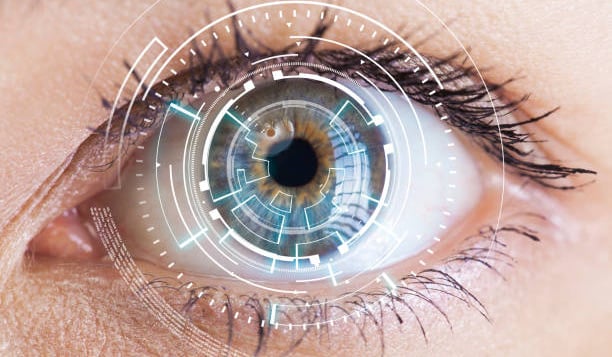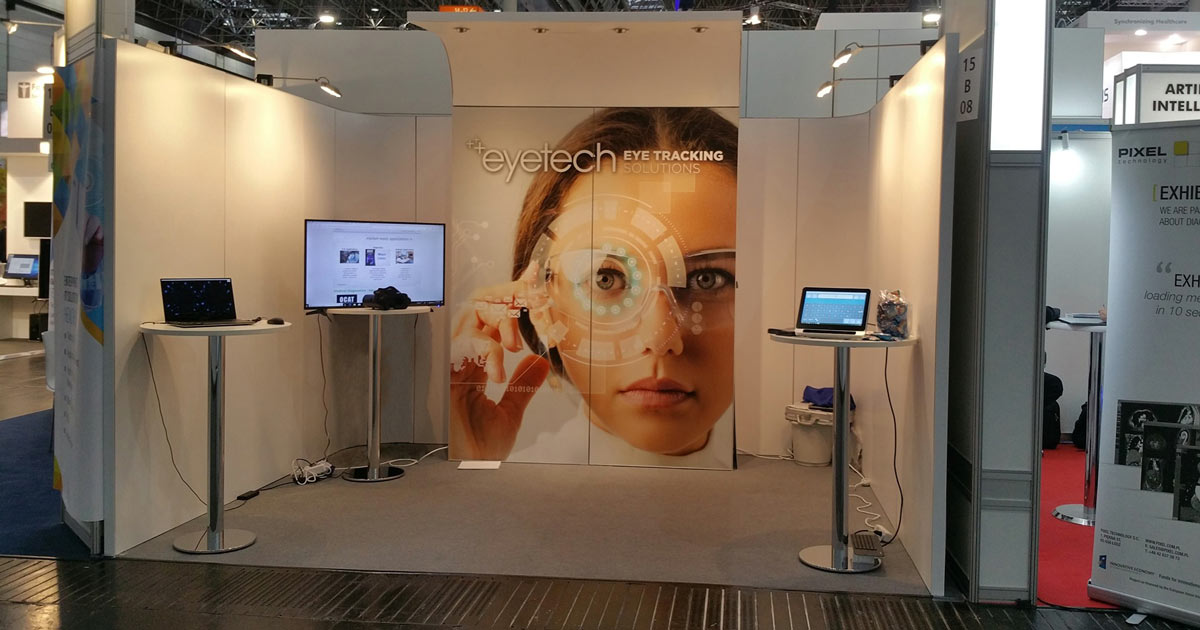
Commonly used as an assistive technology solution to support the communication and computing needs of severely handicapped individuals, eye-tracking is gaining momentum across a broader spectrum of industries as hardware and software solutions continue to evolve. Among those industries, healthcare stands to benefit greatly from advancements in the field of precision eye-tracking. Innovative and emerging use cases are ushering medical eye-tracking to a new forefront.
Here are four key areas where eye-tracking is bringing value to the healthcare community.
Eye Tracking in Medical Research
More than 50 percent of the brain is involved with visual processing. Eye-tracking offers medical researchers a rare window into the brain. Conditions like brain injury and cognitive impairment almost always show up in eye movements. Precision eye-tracking technology offers a simple, non-invasive procedure that can be used to diagnose patient conditions earlier by measuring how the eyes move, track, and focus. This can be immensely valuable as a quantifiable, secondary confirmation of diagnoses and a key driver in earlier intervention for neurodegenerative conditions such as Alzheimer’s, dementia, Huntington’s, and Parkinson’s.
Eye-tracking allows medical professionals to collect data such as temporal eye positions, blinks, pupil size, and other information less intrusively than other methods. Eye-tracking has been especially useful in detecting learning or developmental disabilities such as autism.
Although the core functionality of precision eye-tracking is good enough today to facilitate medical testing, ongoing advancements in software AI algorithms will accelerate solutions’ ability to detect and identify underlying conditions. Simple, non-intrusive, eye-tracking tests will be the norm in many medical facilities in the not-too-distant future. With routine eye-tracking, physicians can easily screen for suspected conditions, make early diagnoses, proceed with treatments to slow the condition, and help reduce the need for expensive tests and on-going therapy to track degenerative conditions over time.
Speech Generation via Eye Tracking
Many alternative and augmentative communication (AAC) platforms and speech generating devices (SGD) leverage eye-tracking to give non-verbal patients with conditions such as cerebral palsy, autism, ALS, muscular dystrophy, stroke, traumatic brain injuries, spinal cord injuries, and Rett syndrome access to their voice and environment. These tools offer an essential lifeline to these patients by enabling them to generate speech with just the power of their gaze using a visual keyboard.
Eye-tracking-equipped SGD and ACC devices enable faster, more efficient hands-free communication and integrated smart environment control for users with physical and speech limitations. This fosters greater independence for users and greater equity in healthcare and the world at large by removing common communication obstacles for disabled patients.
Eye tracking is certified as a medical device, can be used in the ICU, and is eligible for funding.
In the U.S., FDA-registered AAC devices are covered by Medicare, Medicaid, and many private insurance plans. Evaluation by a licensed speech language pathologist is required to make determinations related to patient SGD need, which is also reimbursable.
Eye Tracking and COVID-19 Patient Support
Eye-tracking technology is also helping ERs and ICUs during the COVID-19 pandemic. The same SGD and AAC devices that serve disabled patients have been used to enable communication with intubated patients suffering from COVID-19. These devices use eye-tracking communication to allow doctors, nurses, and caregivers to quickly communicate with patients in critical condition who are unable to speak. Devices also enable patients to communicate remotely with loved ones.
Clear communication can make a tremendous difference in medical settings. Whether a patient is nonverbal due to an existing disability, or due to being intubated or using a ventilator or respirator, eye-tracking solutions give those suffering from COVID-19 or other illnesses an avenue to share immediate needs and important information. Patients simply gaze at on-screen prompts and these devices can interpret and announce their needs to their care team.
Hands-Free Clinical Interfacing Using Eye Tracking
Touch-free interfaces represent another emerging eye-tracking use case. The ability to use your eyes to access and control fixtures and devices rather than having to touch them is especially important in efforts to mitigate the spread of the coronavirus during the current pandemic. Visual control of information kiosks with hand sanitizer beside doors, for example, can go a long way to address sanitation concerns by reducing physical contact.
Eye tracking technology can also offer doctors and caregivers a hands-free interface during surgery or when engaging with high-risk patients. The technology can be deployed in clinical settings, as well as the patient’s home.
The Future of Eye-Tracking
The industry is only beginning to scratch the surface on fundamental use cases of eye-tracking technology in healthcare and beyond. A recent report from Verified Market Research placed the valuation of the eye-tracking marketat roughly $525 million in 2019, with the industry projected to reach over $3 billion by 2027. With an anticipated compound annual growth rate of 27 percent, the market is positioned to gain amplified traction over the coming years.
Driven by a nexus of improved technologies, including sensors, processors, and optics, eye-tracking devices have improved tremendously in recent years. Hardware elements are becoming more affordable, resulting in devices that are better and less expensive, which makes them more accessible to the general public. AI-related advancements in the eye-tracking arena will also play a significant role in continued evolution of the technology.
From supporting non-invasive, advanced diagnostics to ensuring equitable care for disabled patients, eye-tracking solutions offer many benefits to healthcare organizations. As the industry heads into a period of rapid advancement, this is an ideal time for providers to implement innovative use cases for eye-tracking technologies to support improved patient care.
Learn more about eye-tracking innovation in medical research here.
This article was originally published on Health IT Outcomes.



